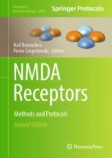Search
Search Results
-
ES Cells or iPS Cells, that Is the Question
There is increasing evidence that microRNA (miRNA) genes regulate cell self-renewal and pluripotency in stem cells. miR-302, miR-209, and miR-371...
-
Reprogramming of Normal Cells into Human Pluripotent Stem Cells
Human pluripotent stem cells (hPSCs) have the potential to become the source of materials for cell-based therapy. The similarity of hPSCs with the...
-
Maintenance of Human Pluripotent Stem Cells
During the last decades, the field of stem cell research has rapidly expanded with the potential to develop the technology of tissue regeneration as...
-
Analysis of Human Peripheral Blood Mononuclear Cells in Patients with Neurodegenerative Diseases
The role of immune system in the progression of neurodegenerative diseases has been studied for decades in animal models. However, invasive studies...
-
Differentiation of Human Pluripotent Stem Cells (hPSCs) into Brown-Like Adipocytes
Increasing brown adipose tissue (BAT) mass and activation is a therapeutic strategy to prevent and treat obesity and associated complications. Obese...
-
Transcription Factor-Directed Dopaminergic Neuron Differentiation from Human Pluripotent Stem Cells
The ability to differentiate pluripotent stem cells and to generate specific cell types is a long-standing goal of regenerative medicine. This can be...
-
In Vitro Development of Mouse and Human NK Cells from Hematopoietic Progenitor Cells
Natural killer (NK) cells are lymphocytes that play an important role at clearing virally infected or cancer cells. Their potential and role in...
-
Can SpRY recognize any PAM in human cells?
The application of clustered regularly interspaced short palindromic repeats (CRISPR) and CRISPR-associated proteins (Cas) can be limited due to a...
-
Phenotypic Characteristics of Dormant Human Non-Small Cell Lung Cancer Cells Surviving Multifraction X-Ray Irradiation
Phenotypic characteristics of human non-small cell lung cancer cells, A549 (p53 wild-type) and H1299 (p53-deficient) as well as their descendants...
-
Rictor/mTORC2 involves mitochondrial function in ES cells derived cardiomyocytes via mitochondrial Connexin 43
Rictor is a key component of the mammalian target of rapamycin complex 2 (mTORC2) and is required for Akt phosphorylation (Ser473). Our previous...

-
Behaviors of nucleosomes with mutant histone H4s in euchromatic domains of living human cells
Since Robert Feulgen first stained DNA in the cell, visualizing genome chromatin has been a central issue in cell biology to uncover how chromatin is...

-
Evidence of steady-state fibroblast subtypes in the normal human breast as cells-of-origin for perturbed-state fibroblasts in breast cancer
BackgroundHuman breast cancer most frequently originates within a well-defined anatomical structure referred to as the terminal duct lobular unit...

-
iPSC-Derived Corneal Endothelial Cells
The corneal endothelium is the innermost monolayer of the cornea that maintains corneal transparency and thickness. However, adult human corneal...
-
Effect of Short Peptides of Pregnancy-Specific β1-Glycoprotein on Differentiation of Human Regulatory T Cells In Vitro and on Their Cytokine Profile
Pregnancy-specific β1-glycoprotein (PSG), one of the most important proteins of pregnancy, has a pronounced immunosuppressive effect. Short peptides...
-
PI3Kγ in B cells promotes antibody responses and generation of antibody-secreting cells
The differentiation of naive and memory B cells into antibody-secreting cells (ASCs) is a key feature of adaptive immunity. The requirement for...

-
Toxicity of particles derived from combustion of Ethiopian traditional biomass fuels in human bronchial and macrophage-like cells
The combustion of traditional fuels in low-income countries, including those in sub-Saharan Africa, leads to extensive indoor particle exposure. Yet,...

-
Development of Immune Cell Therapy Using T Cells Generated from Pluripotent Stem Cells
In the field of cancer immunotherapy, the effectiveness of a method in which patient-derived T cells are genetically modified ex vivo and...
-
Emerging Methods in Modeling Brain Development and Disease with Human Pluripotent Stem Cells
The Nobel Prize–winning discovery that human somatic cells can be readily reprogrammed into pluripotent cells has revolutionized our potential to...
-
Generation of Rare Human NMDA Receptor Variants in Mice
The analysis of rare NMDAR gene variants in mice, coupled with a fundamental understanding of NMDAR function, plays a crucial role in achieving...
-
Modelling ciliopathy phenotypes in human tissues derived from pluripotent stem cells with genetically ablated cilia
The functions of cilia—antenna-like organelles associated with a spectrum of disease states—are poorly understood, particularly in human cells. Here...

